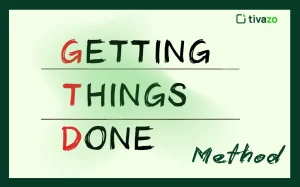You might sometimes see that time is passing by? Adopting timeboxing lets you have a sense of control.
These days, with all we do and all we get notified about, knowing how to manage our time well is important and sometimes hard. For many people, constructing a long list of important goals at the start of the day ends with most items unfinished and stressful situations.
People are now working differently because of a simple technique called timeboxing. No matter if you have a pile-up of meetings, constantly doing tasks, or struggling to manage a team, timeboxing will guide your schedule, make you more productive, and give you command of your tasks.
What is Timeboxing?
Timeboxing means dividing your work into set periods of time and dedicating all that time only to one task. It allows you to concentrate, get rid of distractions, and accomplish shorter periods.
Origins & Theory
Agile Origins
- Timeboxing was first used in Agile project management during the growth of Rapid Application Development and Scrum. Work here is organized into short cycles called sprints (ranging from 1 to 4 weeks) so that progress can be made step by step.
- Timeboxes in personal productivity could take only a few minutes each day.
Parkinson’s Law
- Cyril Northcote Parkinson first coined: “Work grows to fill the amount of time we give it.” Timeboxing uses this idea by limiting the time you spend on tasks.
Psychological Framing
- Having a deadline makes you want to focus on finishing the project instead of focusing on how perfect it can be. They allow pauses to be included, which boost focus and make things easier to switch between.
- Time management and rewards or punishments go together to help develop any new habit.
The Two Types of Timeboxing: Soft vs. Hard

Timeboxing has two types that cater to different people’s work habits.
Soft Timeboxing:
When using Soft Timeboxing, you assign a task a time limit, although you also give yourself some room to work past it. You can stay in the store for some additional minutes if you are almost finished and time is up. Soft timeboxing is excellent for people learning how to manage their time and for people who need to stay focused. It relieves pressure and still gives a reliable framework. Imagine, you have a goal for a specified date, but if that goal is delayed a bit, it doesn’t mean you’ll be punished.
Hard Timeboxing:
This approach encourages you to strictly stick to the timeline. When the time finishes on the timer, the task is over and that is that. This method helps your brain operate under boundaries and not aim for perfection. For those who tend to work too much or pay too much attention to small details, it’s a great help. With timeboxing, you need to decide what is important and move ahead instead of spending time making everything perfect.
Thinking about when to go with soft or hard timeboxing can have a strong effect on your workflow. You could use soft timeboxing for coming up with ideas and hard timeboxing for dealing with emails or scheduling and having meetings.
Step-by-Step Guide to Timeboxing: Take Control of Your Day

1. Analyze Where Your Time Goes
To be productive, you have to first identify how you now spend your time. Keep a record of your activities for at least 24 hours by using Tivazo, a notebook, or your phone’s notes. Keep note of the times you work well, notice where you feel interrupted, and areas where there is room for improvement. By looking at this picture, you can know where you need to improve your structure.
2. Prioritize and Break Down Tasks
As soon as you see how you use your time, outline what your most significant priorities are. Breaking down a big project into steps you can easily do will keep you from feeling anxious. Focusing on what’s most important in your work life gives you a head start for a worthwhile day.
3. Set Time Limits for Each Task
Assign a specific, or fixed duration to each task – called a timebox. Start out with arbitrary guidelines like these based on task complexity and focus level”
- 25 minutes for simple and easy tasks such as writing emails and make phone calls.
- 45 minutes for moderate complexity tasks, such as meetings, reviewing reports, and planning.
- 90 minutes, or more for in-depth focus tasks such as writing, coding, or exercising free thinking.
Although there are slightly arbitrary guidelines, keep in mind to play within your energy levels and your tasks demand.
4. Schedule Timeboxes on Your Calendar
Since illustrating your rationalization can lead to commitment, block your assignments literally on your calendar or a calendar app like Google Calendar or better yet, block on a time tracking app like Tivazo for precise and visual assignments. This practice not only holds you accountable for your commitment to others, but clarifies that your focused plan time is your time alone, and only your time.
5. Start the Timer and Dive In
Once the moment arrives to start your scheduled timebox, press the timer and dedicate 100% of your attention to the designated task. Cut distractions by shutting down notifications, or drawing on a “focus mode” if your instrument offers that feature. When the timebox is done, stop—not matter how unfinished the task may be. This limit creates urgency and prevents you from being efficient to burnout.
6. Reflect and Tune Your Process
At the end of the day, reflect for a moment. Were there any constraints that delivered good outcomes? Was there a film that didn’t give you enough time to enjoy it or one that went on solely to meet its time limit? Were you often distracted by everything or felt rushed with your own time. Make use of what you’ve learned to help plan the next schedule. Adapt the way you work to come up with a personalised and smarter approach to timeboxing.
How Long Should a Timebox Be? Finding Your Ideal Focus Window
One approach to timeboxing is not suitable for all people. A good timebox duration is determined by what the task is, your current energy, and your brain’s capacity for attention.
25 Minutes — The Classic Pomodoro

If you need to finish little tasks or simply feel sluggish, use this mode. Using the method from Pomodoro Technique, timeboxes that last 25 minutes prevent you from feeling confused while working. You can use it for communication through email, to make calls, or complete small tasks. The fact that the time is short makes you work harder on things that normally cause delays.
45 to 60 Minutes — The Moderate Focus Zone
When completing tasks that need more consideration, 45 to 60 minutes is usually best. You get a chance to ease into your day-to-day routine and avoid overwork. It leaves room to discuss things in more detail, yet it is not too long to hold your attention. Some people feel they work best in this range, keeping a balance between their focus and energy.
90 to 120 Minutes — Deep Work Sessions
For work that is creative, difficult, or needs high cognitive skills, such as writing, coding, designing, or planning, we have to allocate more time. Being absorbed for hours helps you become so focused that nothing seems to get in the way of your output. It’s necessary to take some time off before and after your work sessions to give yourself a chance to rest.
Experiment and Adjust
Experimenting is the main thing to do. Go by these guidelines and see how your body responds and works as you train. Probably 25 minutes is brief for your needs, or even 90 minutes may feel long and tiring to you. Check how productive you are and how tired you feel during each timebox session, and make small tweaks as you go. Bit by bit, you will learn what feels comfortable for you, depending on the kind of task and your mental condition.
Benefits of Using Timeboxing

What attracts Elon Musk, tech developers, and students to do timeboxing? Let’s look at why timeboxing is especially effective and how it benefits managing your time.
Boosts Focus
Wasting a lot of time is what happens when you multitask instead of concentrating on one task. It requires you to focus only on one job as if you have only a certain amount of time. Banning distractions and concentrating on one thing helps you work more efficiently. It lets you separate your brain from all the other things happening around you.
Beats Procrastination
When a task is broad and not well-defined, it may seem very difficult to do, so it’s natural to want to delay it. Setting fixed time limits for parts of your work helps you organize and deal with the tasks more comfortably. Each Pomodoro is only 25 or 45 minutes, so starting a task becomes easier as it won’t take much time.
Encourages Flow State
Flow is that wonderful state where you are so completely based in what you do that hours can pass without you even noticing. Since using timeboxes gives you a fixed time, it is easier to stay focused and avoid constant interruptions. When you know for sure that you have a specific time to work deeply, your mind can really focus and deliver.
Reduces Burnout
If you do not take breaks from work, it won’t be long before you feel tired and accomplish less. With timeboxing, you arrange for regular breaks, which prevents you from getting tired or fatigued. Pausing when the time is up allows you to relax, gain energy, and be ready to keep going.
Improves Time Awareness
Do you often see that the day is over when you’re not sure where it went? When using timeboxing, you are required to plan your time in advance. This helps you notice the difference between the amount of time an activity requires and how much time you thought it would use. With time, you can use your planning skills better, make good decisions, and make sure your time is not wasted.
The Downsides of Timeboxing (And How to Manage Them)
Anytime you use a method for productivity, it has its own shortcomings. This article covers some of the most frequent mistakes that occur and suggests how to prevent them.
❌ Over-scheduling: Not giving yourself any free time by over-booking in your schedule can cause your day to be stressful and inflexible. Try to spare enough time between activities so that you don’t get stopped or rushed.
❌ Underestimating the time: It is easy to underestimate the time for every team. Begin with small timeboxes and then increase them depending on your actual progress to stay happy.
❌Disruptions: Interruptions can easily distract you and stop your focus. Try to dim your screen and switch on Tivazo’s focus mode to stay focused during each timebox
❌ Skipping Reviews: Failure to review your progress will stop you from growing. Review your timeboxes every week and change your timetable accordingly.
Supercharge Timeboxing with Tivazo
If you want to timebox, Tivazo is a smart and convenient productivity tool to use. This is how you can use the tool:
Using Tivazo to Help You Timebox.
1. Start a List of Your Tasks
The first step is to make your tasks inside Tivazo. Put the notes into separate groups such as Work, Study, Admin, or Personal. In this way, you can track each day and manage your schedule better.
2. Assign Timeboxes
For every task, come up with a timebox that you think is reasonable. You are more likely to concentrate on specific tasks and there are clear rules for yourself. Setting short time goals ensures you do not get overwhelmed and keeps the process going.
3. Turn on Focus Mode and Press the Timer
You can begin monitoring your work in one simple click. With Focus Mode active, Tivazo doesn’t let any notifications or disturbances distract you so you can do your work without interruptions.
4. Go over Your Time Logs every day.
Remember to always examine the reports generated by Tivazo. Check the time recorded in the project against the timeboxes you had made. Through this data, you can spot errors in estimating, and confirm how exactly you remained on track.
5. Adjust and Optimize Based on Insights
Relook at the information in Tivazo to make your future timeboxes even better. Eventually, you’ll be able to judge time needed for your tasks better, which helps you plan better, deal with less stress, and do more work.
Being part of Tivazo lets both your work and your time-management improve.
Timeboxing vs. Other Time Management Techniques
| Technique | Timeboxing | Time Blocking | Pomodoro |
| Definition | Assign fixed time limits to individual tasks. | Reserve larger chunks of time for types of work. | Work in 25-minute focused intervals with breaks. |
| Focus | Task-level focus with strict time limits. | Category-level focus, grouping similar tasks. | Short bursts of intense focus with frequent breaks. |
| Flexibility | Low — stop when time ends regardless of progress. | High — can adjust tasks within blocks as needed. | Medium — fixed work/rest cycles. |
| Best For | Deep, focused work and avoiding perfectionism. | Routine scheduling and work-life balance. | Quick mental sprints and overcoming procrastination. |
| Breaks | Breaks depend on schedule, not fixed in method. | Breaks taken as fits within the blocks. | Regular 5-minute breaks after each 25-minute session. |
| Tool Dependency | Works well with timers or tracking tools. | Often scheduled with calendar apps. | Usually requires a timer for cycles. |
| Outcome | Clear time limits improve task focus and estimation. | Organized day with balanced work categories. | Improved focus with balanced energy management. |
Final Thoughts: Take Control of Your Time Today
When you keep busy all day and still can’t get everything done, timeboxing gives you a useful method to help you focus and save time. When you organize specific times to work on your tasks, you become more organized and avoid feeling stressed. Select just one simple task, bring up Tivazo, block out the time, and continue working till the timer runs out. If you do this every day, you will soon observe how your productivity and thoughts improve. Book your day in sections, stay focused, and succeed in the most active part of your day.
2. What is the meaning of timeboxing?
Timeboxing means working within a set time frame instead of until the task is “done.”
4. Does Elon Musk use timeboxing?
Yes, he uses 5-minute blocks—an extreme form of timeboxing.
5. What’s the best timeboxing app?
Tivazo is ideal. It lets you plan, track, and improve your timeboxes with smart insights.




